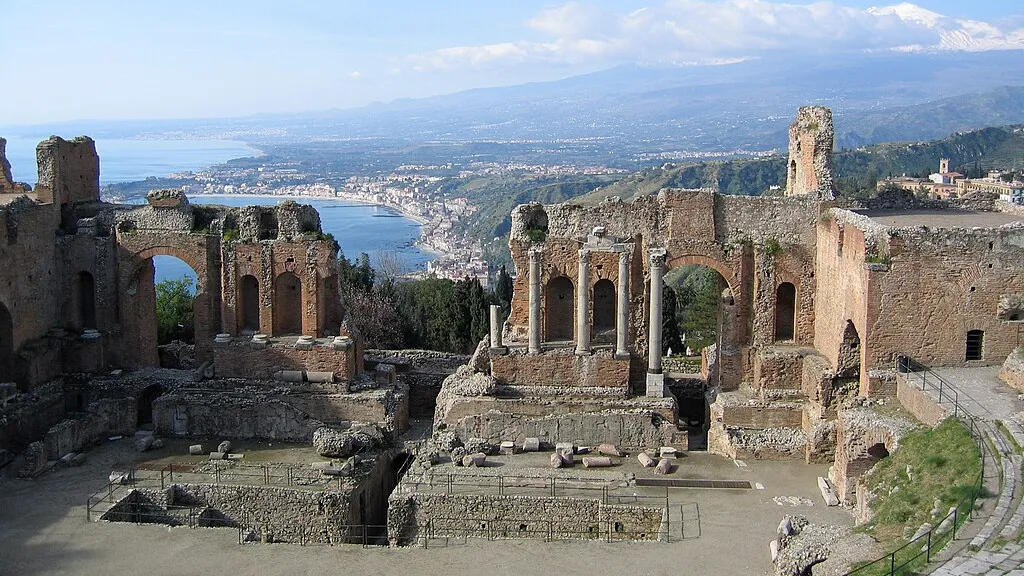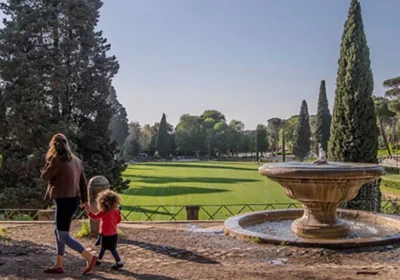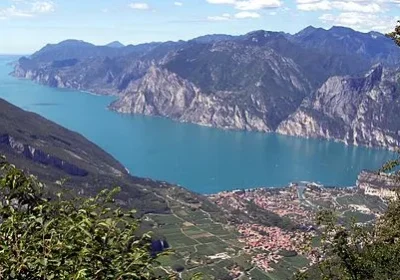Taormina city tour.
A charming Italian city. Taormina has a thousand-year history and in the century before last earned the status of an international resort, a recognised centre of culture and art.
Numerous ancient monuments, medieval temples, citadels and palaces, Gothic and Baroque buildings create a genuine atmosphere of past centuries in the city streets. In the centre of the city a traveller will have an opportunity to see the local Duomo – the Cathedral. Built in the 15th century, this cathedral replaced an early medieval church dedicated to St Nicholas the Wonderworker.
In the Cathedral Square, just in front of Dom San Nicolò stands a picturesque fountain. The three-tiered pedestal is topped with an interesting figure – a crowned centaur. This unusual character is the symbol of Taormina. The clock tower of the Torre dell’ Orologio, which stands at the side of the square, has a stark and ancient feel. The nearby Church of St Augustine is more ornate. It was also built in the early 15th century as a symbol of the city’s deliverance from a plague epidemic.
Opposite it stands another small church dedicated to St Giuseppe.
You can also admire the church of St Catherine of Alexandria. The church dates back to the 17th century and is best known for the statue of the martyr, which was erected above the entrance to the church.
The Anglican church of St George, built at the beginning of the 20th century, blends very well into the landscape of Taormina. Dedicated to St George the Victorious, the church stands at the edge of a terrace that offers spectacular views of the sea and the mountains.
Another church of Our Lady of God is located in the rock partially utilising a niche in Mount Tauro. It was built in the middle of the 17th century and has been attracting pilgrims ever since.
The Corvaggio Palace is located in the centre of the town and is its trademark. The Arabs had a hand in the construction of the palazzo.
Palazzo Duca di Santo Stefano is the residence of the Spanish Duke of Santo Stefano in Taormina.
Like Florence, it has its own Old Palace. The Palazzo Ciampoli, the oldest palace in the city, is awarded this title – the date of its creation is lost in the depths of the 13th century.
The remains of the Greek Theatre evoke contradictory feelings. The preserved fragments allow tourists to judge for themselves the scope of the ancient builders (III century BC). The diameter of the open theatre was 109 metres, the stands could seat up to 10,000 spectators.
The Roman Odeon stands in contrast to the Greek theatre – it has very modest dimensions. It was designed to seat 200 people. In the annals of the Odeon is listed the Roman consul and politician Octavian Augustus (I century BC).
Another evidence of the greatness of the Roman Empire on the territory of the city are the ruins of Naumachia. This term was used in ancient Rome to refer to a place for gladiatorial water battles.

















